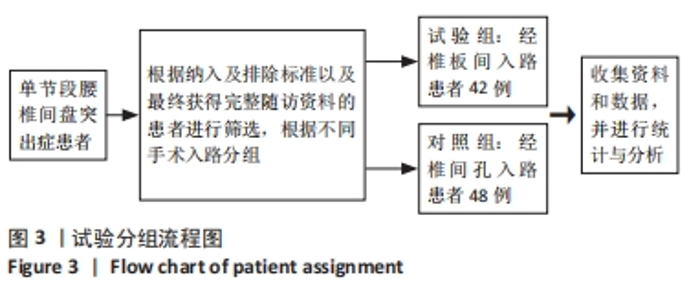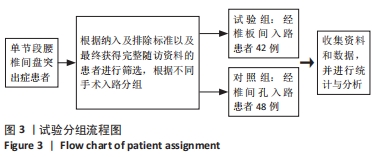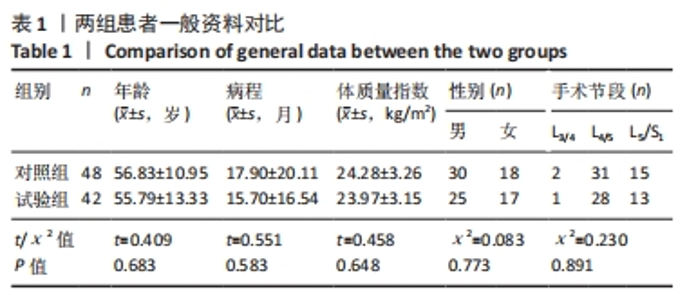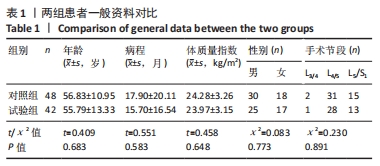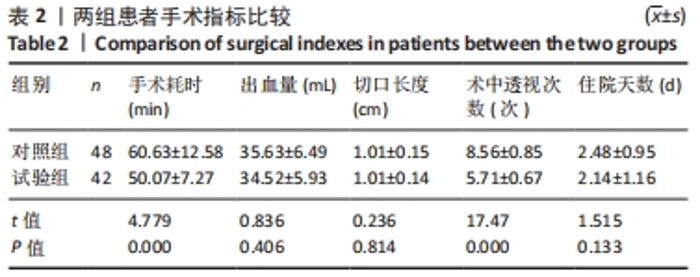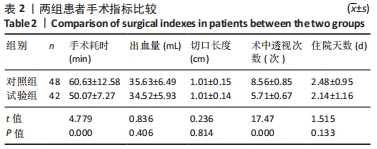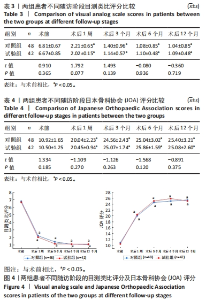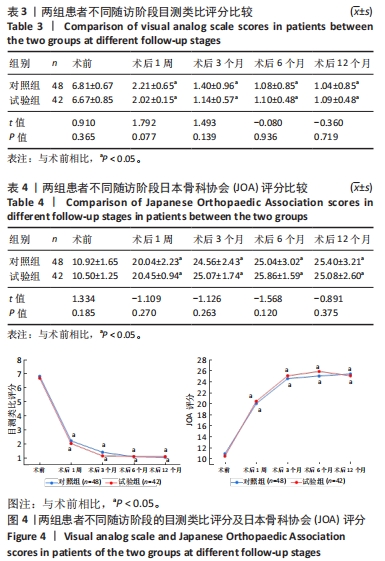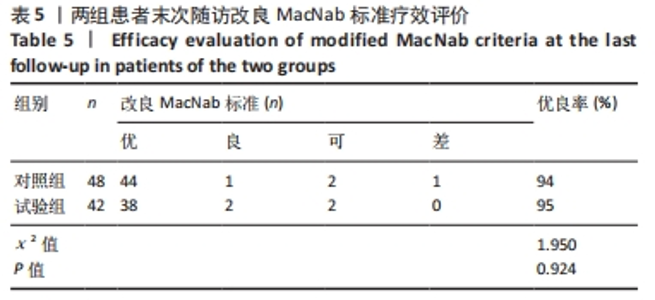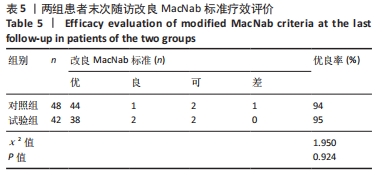[1] KANAT A, YAZAR U, OZDEMIR B,et al. Neglected knowledge: Asymmetric features of lumbar disc disease. Asian J Neurosurg. 2017;12(2):199-202.
[2] YIN G, WANG C, LIU SQ. Comparative Analysis of the Therapeutic Efficiency and Radiographic Measurement Between the Transforaminal Approach and Interlaminar Approach in Percutaneous Endoscopic Discectomy. Turk Neurosurg. 2021;31(6):857-865.
[3] 王威威, 连鸿凯. 经皮椎间孔镜技术对巨大型腰椎间盘突出症患者功能恢复、创伤程度的前瞻性研究[J]. 实用医学杂志,2021,37(5):648-653.
[4] 吴继彬, 郭开今, 袁峰, 等. 改良TLIF治疗腰椎退变性疾病68例临床疗效观察[J]. 中国矫形外科杂志,2015,23(17):1562-1566.
[5] FAU C, PATRASCU JM, HARAGUS H, et al. Correlation between multifidus fatty atrophy and lumbar disc degeneration in low back pain. BMC Musculoskelet Disord. 2019;20(1):414.
[6] SON S, AHN Y, LEE SG, et al. Learning curve of percutaneous endoscopic transforaminal lumbar discectomy by a single surgeon. Medicine (Baltimore). 2021;100(4):e24346.
[7] CHENG YP, CHENG XK, WU H. A comparative study of percutaneous endoscopic interlaminar discectomy and transforaminal discectomy for L5-S1 calcified lumbar disc herniation. BMC Musculoskelet Disord. 2022;23(1):244.
[8] KIM HS, SHARMA SB, RAORANE HD,et al. Early results of full-endoscopic decompression of lumbar central canal stenosis by outside-in technique: A clinical and radiographic study. Medicine (Baltimore). 2021;100(39):e27356.
[9] 王华凡. 经皮脊柱内窥镜下髓核摘除术治疗单节段腰椎间盘突出症患者的临床疗效[J]. 实用中西医结合临床,2021,21(5):25-26.
[10] CHEN Q, ZHANG Z, LIU B,et al. Evaluation of Percutaneous Transforaminal Endoscopic Discectomy in the Treatment of Lumbar Disc Herniation: A Retrospective Study. Orthop Surg. 2021;13(2):599-607.
[11] LEWANDROWSKI KU, DOWLING Á, DE CARVALHO PST, et al. Indication and Contraindication of Endoscopic Transforaminal Lumbar Decompression. World Neurosurg. 2021;145:631-642.
[12] LI P, YANG F, CHEN Y, et al. Percutaneous transforaminal endoscopic discectomy for different types of lumbar disc herniation: A retrospective study. J Int Med Res. 2021;49(10):3000605211055045.
[13] ANDERSSON GB. Epidemiological features of chronic low-back pain. Lancet. 1999; 354(9178):581-585.
[14] 阮玉山, 刘佳, 彭志, 等. 椎间孔镜治疗不同年龄段腰椎间盘突出症的短期疗效对比[J]. 骨科,2021,12(4):306-309.
[15] ZHANG C, LI Z, YU K, et al. A Postoperative Phenomenon of Percutaneous Endoscopic Lumbar Discectomy: Rebound Pain. Orthop Surg. 2021;13(8):2196-2205.
[16] JIANG X, ZHOU X, XU N. Clinical effects of transforaminal and interlaminar percutaneous endoscopic discectomy for lumbar disc herniation: A retrospective study. Medicine (Baltimore). 2018;97(48):e13417.
[17] DOWLING Á, LEWANDROWSKI KU, DA SILVA FHP, et al. Patient selection protocols for endoscopic transforaminal, interlaminar, and translaminar decompression of lumbar spinal stenosis. J Spine Surg. 2020;6(Suppl 1):S120-S132.
[18] ORITA S, INAGE K, EGUCHI Y,et al. Lumbar foraminal stenosis, the hidden stenosis including at L5/S1. Eur J Orthop Surg Traumatol. 2016;26(7):685-693.
[19] ZHAO Y, FAN Y, YANG L, et al. Percutaneous Endoscopic Lumbar Discectomy (PELD) via a Transforaminal and Interlaminar Combined Approach for Very Highly Migrated Lumbar Disc Herniation (LDH) Between L4/5 and L5/S1 Level. Med Sci Monit. 2020;26:e922777.
[20] KIM HS, PAUDEL B, JANG JS, et al. Percutaneous Endoscopic Lumbar Discectomy for All Types of Lumbar Disc Herniations (LDH) Including Severely Difficult and Extremely Difficult LDH Cases. Pain Physician. 2018;21(4):E401-E408.
[21] BAI X, LIAN Y, WANG J, et al. Percutaneous endoscopic lumbar discectomy compared with other surgeries for lumbar disc herniation: A meta-analysis. Medicine (Baltimore). 2021;100(9):e24747.
[22] 王成伟. 腰椎椎旁肌横截面积和多裂肌脂肪浸润及不对称性对退行性腰椎滑脱的影响[J]. 感染、炎症、修复,2020,21(3):177-181.
[23] 蒋强,丁宇, 刘金玉, 等. 有限元模拟全内镜下精准椎板开窗减压术及生物力学分析[J]. 中国组织工程研究,2020,24(12):1891-1896.
[24] 张新立. 可视化椎间孔成形系统辅助下的椎间孔镜手术治疗腰椎间盘突出症的疗效[J]. 甘肃医药,2019,38(3):262-263+266.
[25] SHIN JK, YOUN MS, SEONG YJ, et al. Iatrogenic dural tear in endoscopic lumbar spinal surgery: full endoscopic dural suture repair (Youn’s technique). Eur Spine J. 2018;27(Suppl 3):544-548.
[26] 孙宜保, 杨勇, 卢中道, 等. 经皮脊柱内镜日间手术治疗青壮年腰椎间盘突出症的临床疗效 [J]. 临床医学,2021,41(3):1-3.
[27] KIM JS, YEUNG A, LOKANATH YK, et al. Is Asia truly a hotspot of contemporary minimally invasive and endoscopic spinal surgery? J Spine Surg. 2020;6(Suppl 1): S224-S236.
[28] 刘路星, 陈良龙, 郑阳, 等. 新型定位穿刺方法在椎间孔镜手术初学者中的应用 [J]. 中国内镜杂志,2021,27(1):15-21.
[29] GADJRADJ PS, HARHANGI BS, AMELINK J, et al. Percutaneous Transforaminal Endoscopic Discectomy Versus Open Microdiscectomy for Lumbar Disc Herniation: A Systematic Review and Meta-analysis. Spine (Phila Pa 1976). 2021; 46(8):538-549.
[30] BAI J, ZHANG W, LIU X, et al. Percutaneous transforaminal endoscopic discectomy in the treatment of senior patients with lumbar degenerative disc disease. Exp Ther Med. 2019;17(1):874-882.
[31] RUETTEN S, KOMP M, MERK H, et al. Full-endoscopic interlaminar and transforaminal lumbar discectomy versus conventional microsurgical technique: a prospective, randomized, controlled study. Spine (Phila Pa 1976). 2008;33(9):931-939.
|
